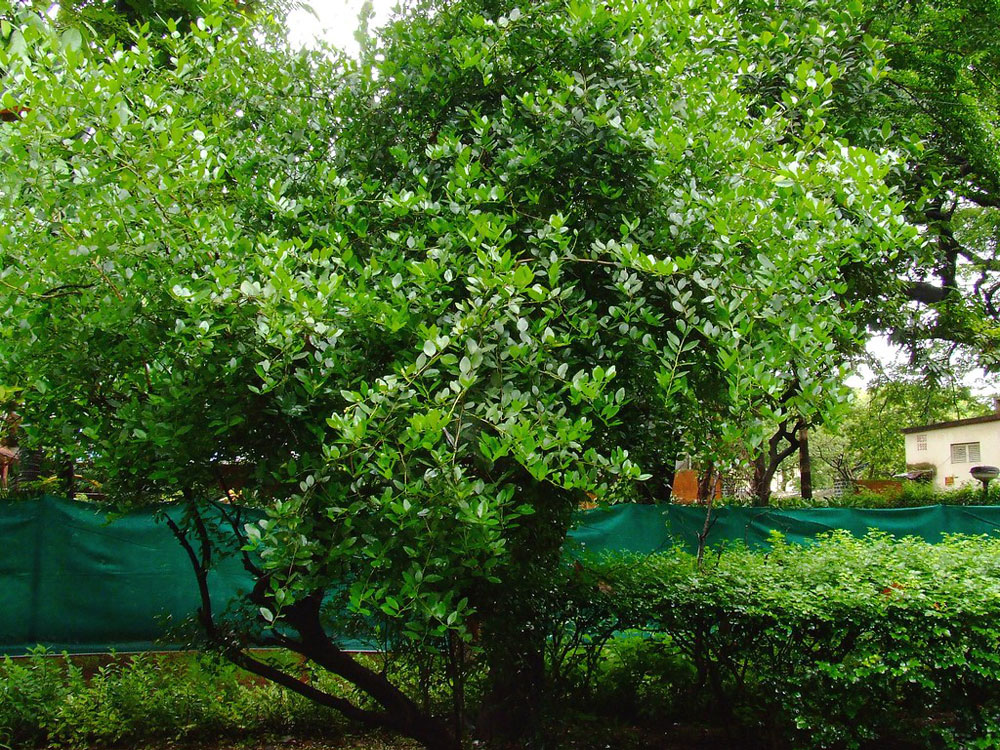Kaadu Nimbe - Wild Lime

Atalantia monophylla
Summary
Scientific Classification
Kingdom: Plantae
Division: Magnoliophyta
Class: Dicotyledonae
Order: Sapindales
Family: Rutaceae
Genus: Atalantia
Species: A.monophylla
Scientific Name: Atalantia monophylla (L.) Corr. Serr.
Common Names:
English name: Indian Atalantia, Wild Lime.
Hindi name: Banjamir Nimbu.
Kanda name: Kaadu Nimbe.
Marathi name: Rann Limbu.
Description:
- Habit and habitat: Open country near the sea. Shrub or Small tree. Indian Atalantia is a small, much-branched, evergreen tree. The branches are usually armed with single, stout, sharp spines up to 2cm long. The plant is harvested from the wild, usually for medicinal purposes.
- Distribution: Global Distribution, E. Asia - Indian subcontinent, Myanmar, Thailand, Cambodia, Laos, Vietnam, Malaysia.
Leaf: Simple Alternate distichous. Leaves 3-7 x 2-4 cm, ovate or elliptic, base broadly cuneate, margins entire to obscurely undulate, apex obtuse or emarginate, coriaceous; petiole to 1 cm long. Racemes axillary, contracted.
Inflorescence: racemes.
Flower: In axillary racemes, fragrant, cream. Flowering in two peaks. September-December and February-March. Flowers to 1 cm across; pedicels to 1.5 cm long. Calyx irregularly lobed or spathiform, c. 3 mm long. Petals 4 or 5, white, 7-9 x 3-4 mm, obovate. Stamens 8 or 10, unequal, base connate and forming a tube. Ovary 4-5 mm long, oblong, 4-celled; ovule 1 or 2 per cell; style to 3 mm long.
Fruit: berry, globose, ripening orange. Seeds 4, ovoid. Fruiting throughout the year. 1.5 cm across, globose, yellowish-green, glandular dotted.
Seed: few, c. 6 mm long. - Flowering and fruiting: December-March.
- Propagation: through seeds.
- Importance:
The fruits are said to make a nice pickle. ‘Warm’ oil obtained from the fruit is used in the treatment of chronic rheumatism. It should be tested as an ornamental hedge plant in warm subtropical climates, since it has dense deep-green evergreen foliage and bears a great profusion of fragrant flowers and many small globose yellow fruits. The yellow wood is close-grained, heavy and very hard and takes a good polish. Usually only available in small dimensions, it has been recommended as a substitute for boxwood and could be used for engravings. - Location: Botanical Garden.
 Trees of GSS Project supported by Makerspace Belgaum Website concept and designe by
Trees of GSS Project supported by Makerspace Belgaum Website concept and designe by